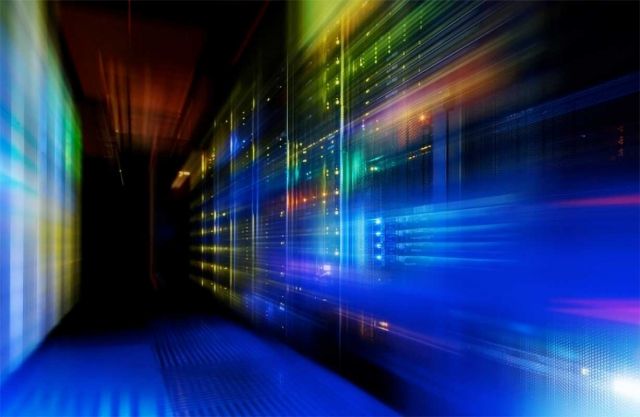Blumenthal "Quiet Light for Data Ctrs"
Prof. Dan Blumenthal’s FRESCO project featured in The UCSB Current article “Quiet Light for Future Data Centers”

Blumenthal’s project aims to bring the data center into an energy efficient scalable future
The deluge of data we transmit across the globe via the internet-enabled devices and services that come online every day has required us to become much more efficient with the power, bandwidth and physical space needed to maintain the technology of our modern online lives and businesses.
“Much of the world today is interconnected and relies on data centers for everything from business to financial to social interactions,” said Daniel Blumenthal, a professor of electrical and computer engineering at UC Santa Barbara. The amount of data now being processed is growing so fast that the power needed just to get it from one place to another along the so-called information superhighway constitutes a significant portion of the world’s total energy consumption, he said. This is particularly true of interconnects — the part of the internet infrastructure tasked with getting data from one location to another.
“Think of interconnects as the highways and the roads that move data,” Blumenthal said. There are several levels of interconnects, from the local types that move data from one device on a circuit to the next, to versions that are responsible for linkages between data centers. The energy required to power interconnects alone is 10% of the world’s total energy consumption and climbing, thanks to the growing amount of data that these components need to turn from electronic signals to light, and back to electronic signals. The energy needed to keep the data servers cool also adds to total power consumption.
“The amount of worldwide data traffic is driving up the capacity inside data centers to unprecedented levels and today’s engineering solutions break down,” Blumenthal explained. “Using conventional methods as this capacity explodes places a tax on the energy and cost requirements of optical communications between physical equipment, so we need drastically new approaches.”
As the demand for additional infrastructure to maintain the performance of the superhighways increases, the physical space needed for all these components and data centers is becoming a limiting factor, creating bottlenecks of information flow even as data processing chipsets increase their capacity to what could be a whopping 100 terabytes per second for a single chip in the not too far future. This level of expected scaling was unheard of not just a handful of years ago and now it appears that is where the world is headed.
“The challenge we have is to ramp up for when that happens,” said Blumenthal, who also serves as director for UC Santa Barbara’s Terabit Optical Ethernet Center, and represents UC Santa Barbara in Microsoft’s Optics for the Cloud Research Alliance.
This challenge is a now job for Blumenthal’s ARPA-e project called FRESCO: FREquency Stabilized COherent Optical Low-Energy Wavelength Division Multiplexing DC Interconnects. Bringing the speed, high data capacity and low-energy use of light (optics) to advanced internet infrastructure architecture, the FRESCO team aims to solve the data center bottleneck while bringing energy usage and space needs to a sustainable and engineerable level.
The UCSB Current – "Quiet Light for Future Data Centers" (full article)